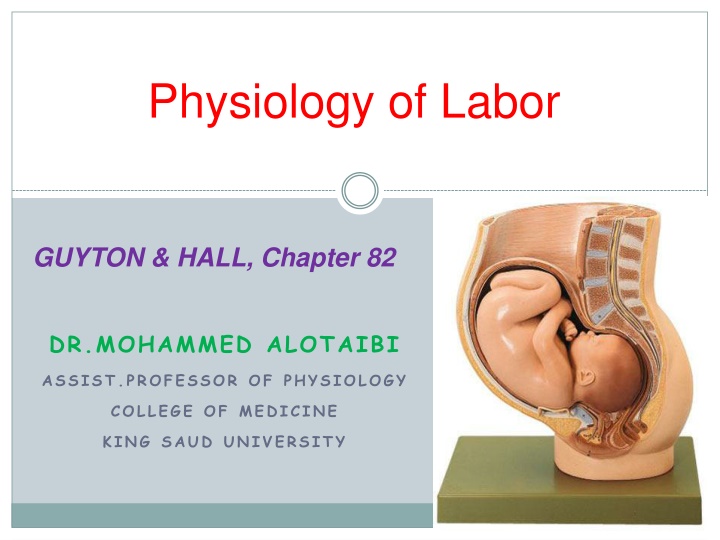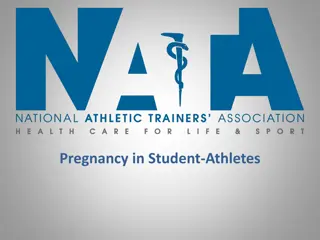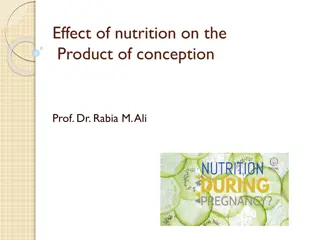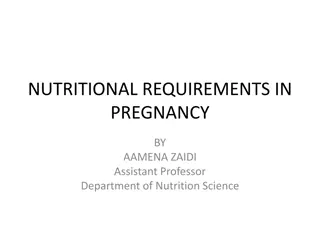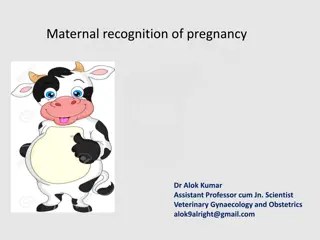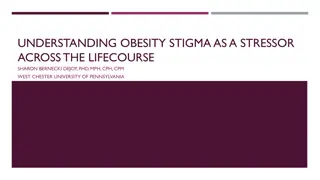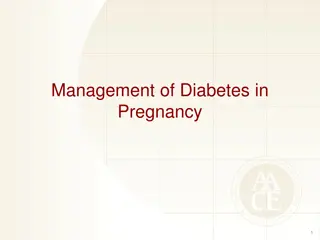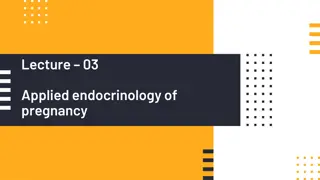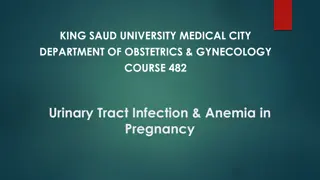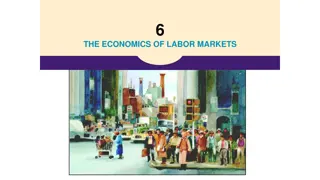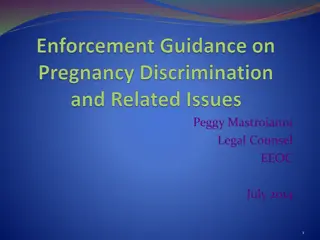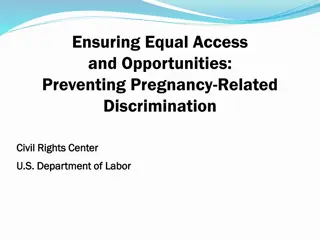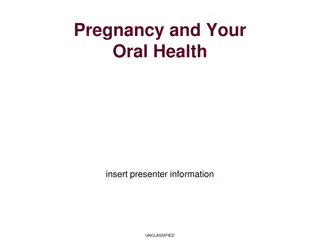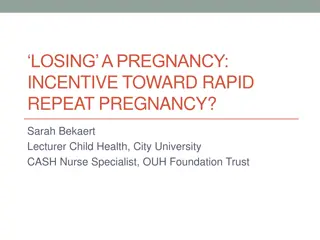The Physiology of Labor in Pregnancy
Labor, also known as parturition, is the process of uterine contractions leading to the expulsion of the fetus. Various hormonal changes, including increased estrogen levels, play a crucial role in triggering and regulating labor. The progression from a quiescent uterus to active contractions involves maturation of the fetus, cervical dilation, and hormonal interactions. Oxytocin, prostaglandins, and changes in estrogen and progesterone levels contribute to the coordination of uterine activity. Understanding these physiological processes is essential for recognizing the stages and factors influencing labor onset.
Download Presentation

Please find below an Image/Link to download the presentation.
The content on the website is provided AS IS for your information and personal use only. It may not be sold, licensed, or shared on other websites without obtaining consent from the author.If you encounter any issues during the download, it is possible that the publisher has removed the file from their server.
You are allowed to download the files provided on this website for personal or commercial use, subject to the condition that they are used lawfully. All files are the property of their respective owners.
The content on the website is provided AS IS for your information and personal use only. It may not be sold, licensed, or shared on other websites without obtaining consent from the author.
E N D
Presentation Transcript
Physiology of Labor GUYTON & HALL, Chapter 82 DR.MOHAMMED ALOTAIBI ASSIST.PROFESSOR OF PHYSIOLOGY COLLEGE OF MEDICINE KING SAUD UNIVERSITY
Objectives By the end of this lecture, you should be able to: Define labor/labour (parturition). Recognize the factors triggering the onset of labor. Describe the hormonal changes that occur before and during labor. Describe the phases of uterine activity during pregnancy and labor. Describe the clinical stages of human labor.
Labor Interactions Normal Pregnancy Uterine quiescence Immature fetus Closed cervix Fetus Labor Coordinated uterine activity Maturation of the fetus Progressive cervical dilation Placenta Membranes Mother
Labor Definition Uterine contractions that lead to expulsion of the fetus to the extrauterine environment. Towards the end of pregnancy the uterus becomes progressively more excitable and develops strong rhythmic contractions that lead to expulsion of the fetus.
Labor Uterus is spontaneously active. Spontaneous depolarization of pacemaker cells. Gap junctions spread depolarization. Exact trigger is unknown Hormonal changes Mechanical changes
Hormonal changes Increased ratio of estrogens to progesterone Progesterone & Estrogen Progesterone inhibits uterine contractility Estrogen stimulates uterine contractility From 7th month till term Progesterone secretion remains constant or decreases slightly Estrogen secretion increases continuously The estrogen/progesterone ratio increases sufficiently toward the end of pregnancy to be at least partly responsible for the increased contractility of the uterus
Hormonal changes Progesterone GAP junctions Oxytocin receptors prostaglandins resting mem. Potential Estrogen GAP junctions with onset of labour Oxytocin receptors Prostaglandins E P
Hormonal changes Oxytocin Dramatic of oxytocin receptors at the last few months of pregnancy gradual transition from passive relaxed to active excitatory muscle ( responsiveness). Increase in oxytocin secretion at labor by posterior pituitary gland. Oxytocin increases uterine contractions by Directly on its receptors Indirectly by stimulating prostaglandin production
Hormonal changes Prostaglandins Central role in initiation & progression of human labour Locally produced (intrauterine) Oxytocin and cytokines stimulate its production Prostaglandin stimulates uterine contractions by: Direct effect: Through their own receptors Upregulation of myometrial gap junctions Indirect effect: Upregulation of oxytocin receptors
Mechanical changes Stretch of the uterine muscle Increases contractility Fetal movements Multiple pregnancy Stretch of the cervix Increases contractility (reflex) (Positive feedback mechanism) Membrane sweeping & rupture Fetal head
Onset of labor During pregnancy Periodic episodes of weak and slow rhythmical uterine contractions (Braxton Hicks) 2nd trimester Towards the end of pregnancy Uterine contractions become progressively stronger. Uerine contractions change suddenly, within hours, to become strong contractions leading to cervical stretching and force the baby through the birth canal.
Onset of Labor Positive feedback mechanisms Labor contractions obey all the principles of positive feedback: 1. Stretching of the cervix causes the entire body of the uterus to contract. 2. Stretching of the cervix also causes the pituitary gland to secrete oxytocin
Onset of Labor Baby moves deeper into mother s birth Baby moves deeper into mother s birth Baby moves deeper into mother s birth canal canal canal Afferent impulses to hypothalamus Pressoreceptors in cervix of uterus excited Pressoreceptors in cervix of uterus excited
Onset of Labor Hypothalamus sends efferent impulses to posterior pituitary, where oxytocin is stored Hypothalamus sends efferent impulses to posterior pituitary, where oxytocin is stored Hypothalamus sends efferent impulses to posterior pituitary, where oxytocin is Posterior pituitary releases oxytocin to blood; oxytocin targets mother s uterine muscle stored Posterior pituitary releases oxytocin to blood; oxytocin targets mother s uterine muscle Uterus responds by contracting more vigorously Baby moves deeper into mother s birth canal Baby moves deeper into mother s birth Baby moves deeper into mother s birth canal canal Afferent impulses to hypothalamus Afferent impulses to hypothalamus Afferent impulses to hypothalamus Pressoreceptors in cervix of uterus excited Pressoreceptors in cervix of uterus excited Pressoreceptors in cervix of uterus excited Positive feedback mechanism continues to cycle until interrupted by birth of baby
Mechanism of Labor Contractions start at the fundus and spread to the lower segment The intensity of contractions is strong at the fundus but weak at the lower segment In early stages: 1 contraction/ 30 minuets As labor progresses: 1 contraction/ 1-3 minutes Abdominal wall muscles contract Rhythmical contractions allow blood flow
Phases of uterine activity Inhibitors - Progesterone - Prostacyclin (PGI2) - Relaxin - Nitric Oxide - PTHrP Uterotrophins Estrogen + Gap junctions + Receptors + Ion channels Uterotonins - Prostaglandins - Oxytocin Involution - Oxytocin - Prostaglandins - Thrombin L a b o r Quiescence Phase 0 Stimulation Phase 2 Involution Phase 3 Activation Phase 1
Phases of uterine activity Phase 0 (quiescence) Occurs during early pregnancy. Increase cAMP level. Increase production of: Prostacyclin (PGI2) causes uterine relaxation Nitric oxide (NO) causes uterine relaxation PTHrP inhibits uterine contraction
Phases of uterine activity Phase 1 (activation) Occurs in third trimester Promotes a switch from quiescent to active uterus Increase excitability & responsiveness to stimulators by Increasing expression of gap junctions Increasing receptors and ion channels Oxytocin receptors PG receptors
Phases of uterine activity Phase 2 (stimulation) Occurs in the last 2-3 gestational weeks Increase in synthesis of uterotonins Oxytocin Prostaglandins Phase 3 (uterine involution) Pulsatile release of oxytocin Delivery of the placenta Involution of the uterus Occurs in 4-5 weeks after delivery Lactation helps in complete involution
Phases of uterine activity (summary) Phase 0 (quiescence) Phase 1 (uterotrophins) Phase 3 (involution) Phase 2 (uterotonins)
Clinical Stages of Labor 1) Dilation Cervix becomes dilated Full dilation is 10 cm Uterine contractions begin and increase Cervix softens and effaces (thins) The amnion ruptures ( breaking the water ) Longest stage at 6 12 hours
Stages of Labor 2) Expulsion Infant passes through the cervix and vagina Can lasts as long as 2 hours, but typically is 50 minutes in the first birth and 20 minutes in subsequent births Normal delivery is head first (vertex position) Breech presentation is buttocks-first
Clinical Stages of Labor 3) Placental stage Delivery of the placenta Usually accomplished within 15 minutes after birth of infant After birth placenta attached to the fetal membranes are delivered All placental fragments should be removed to avoid postpartum bleeding
New arrival Human_infant_newborn_baby
